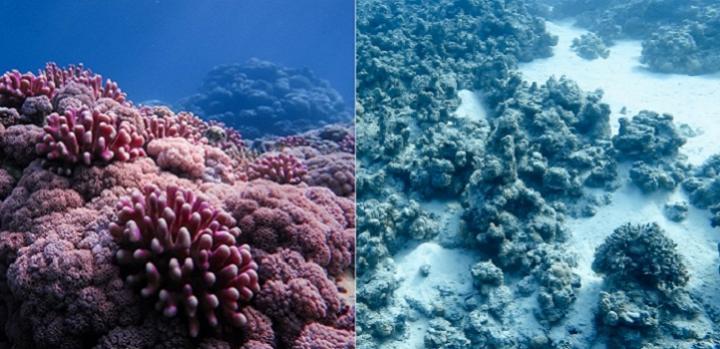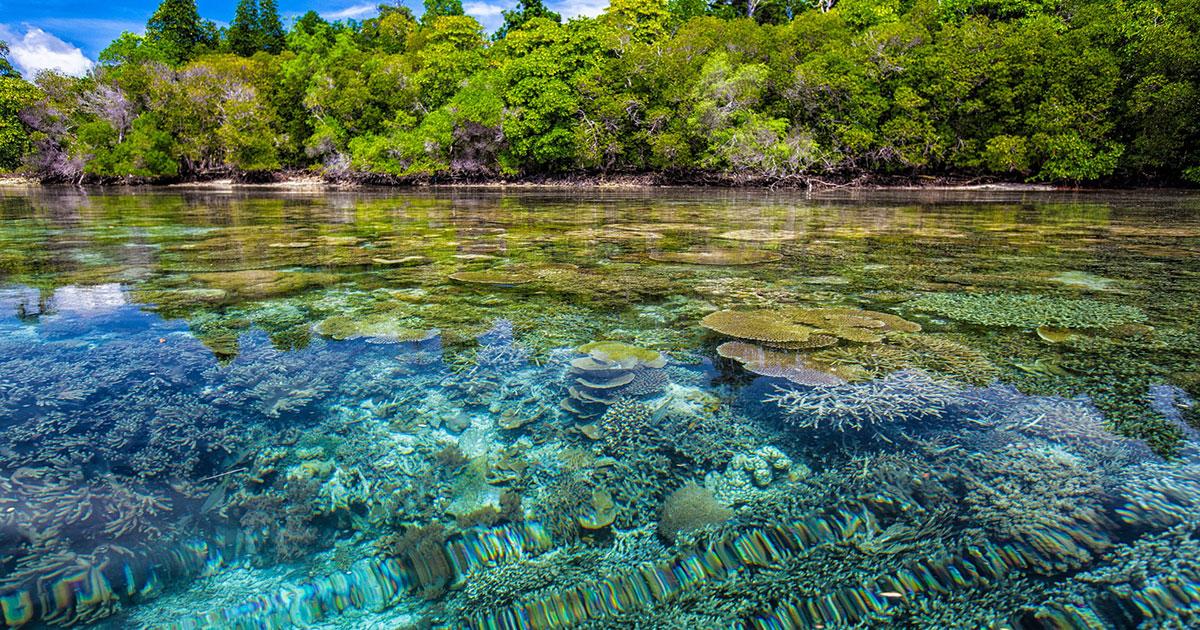Coral bleaching events may occur more frequently in the Red Sea than previously thought, according to an algorithm developed by KAUST researchers. Their findings also indicate that the northern part of the Red Sea might not remain a thermal refuge for coral ecosystems for long.
Ocean modeling expert Ibrahim Hoteit, and colleagues, used more than 30 years of satellite data on Red Sea surface temperatures to develop an algorithm that successfully isolated every extreme warming event that led to documented coral bleaching in the Red Sea. Their approach suggests that coral bleaching in the Red Sea may be greatly underestimated.
 A healthy reef (left) compared to a dead coral reef, which has undergone bleaching
A healthy reef (left) compared to a dead coral reef, which has undergone bleaching
When exposed to unusually high sea surface temperatures for prolonged periods, corals expel the marine algae that live within them. Because these algae serve as the corals' main energy source, in their absence, coral colonies turn a deadly looking white, a phenomenon known as coral bleaching. If the adverse conditions continue, it is difficult for the corals to regain the algae and so they tend to die, in turn affecting the coral reef ecosystem that depends on them for survival.
Red Sea surface temperatures are among the warmest in the world, and its corals are thought to be among the most heat tolerant. But Red Sea corals are poorly monitored, and therefore, little is known about the true extent of their damage due to rising temperatures.
"It is important to detect bleaching-prone regions in the Red Sea because this allows us to optimize the sustainable management of the coastline by identifying the areas most in need of mitigation plans to reduce the stress on corals," says Ph.D. student Lily Genevier.
Currently, scientists use a measure called degree heating weeks to assess the accumulation of heat stress, or the duration and amount that temperatures rise above the bleaching threshold of 1 degree Celsius over the highest summertime mean of sea surface temperatures. But this method has both overestimated and missed Red Sea bleaching events. "This may be because this method is not efficient at detecting unusual warming in cooler periods," Genevier explains.
Marine heatwaves, on the other hand, are calculated by pooling sea surface temperatures around each day of the year. KAUST researchers fine tuned this approach by adapting it to the environmental conditions that have led to documented Red Sea coral bleaching events.
They found that bleaching occurred during summer marine heatwaves where sea surface temperatures remained in the top five percent for at least a week. "Since the marine heatwave threshold is based on a percentile, it follows seasonality, meaning it can detect extreme anomalous heating during cooler summer periods," Genevier explains. They also found that all documented bleaching events happened during marine heatwaves with a mean sea surface temperature of 30 degrees Celsius or higher.
The findings suggest that Red Sea coral bleaching may have been greatly underestimated. They also indicate an emerging pattern of extreme warming events in the northern region, which was previously thought to act as a thermal refuge for corals.
"Because this study was able to detect bleaching-prone areas using only the few known bleaching events in the Red Sea, we think it should be applied to other data-poor regions," says Genevier. The team is now working on implementing their methodology on a global scale by tuning marine heatwaves to bleaching conditions in other tropical marine ecosystems. They plan to upload their results onto the interactive online Red Sea Atlas being developed at KAUST.
Story by KAUST



